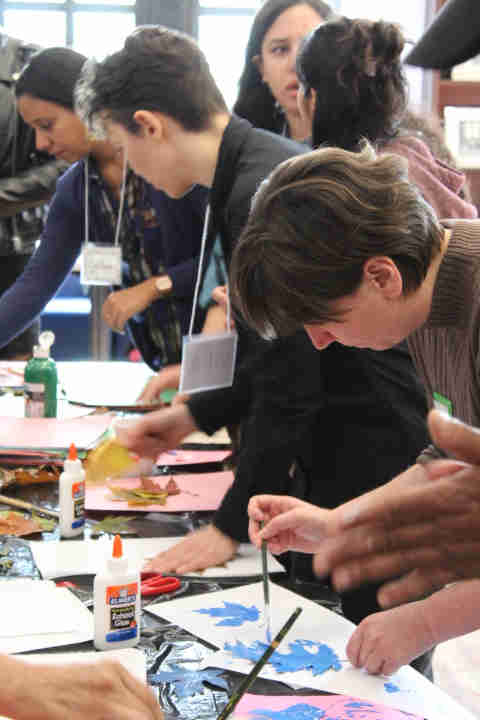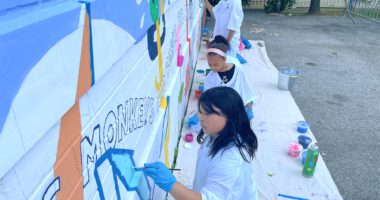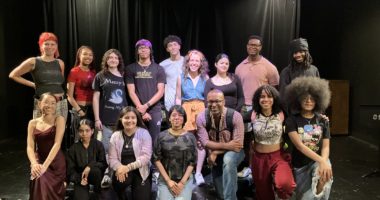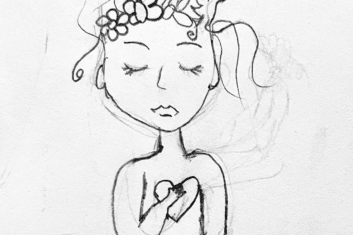On the first day of my TAP internship this winter, a visual arts and creative writing residency at PS 171 in Queens, my mentors, Chelsea Asher and Yael Ben-Zion, began class by asking our third graders to share what color they were feeling. Halfway through the opening ritual, the range of emotions, and the individual interpretations of how those feelings translated into colors, had already formed a rainbow: nervous greens, sad yellows, calm greens, happy yellows, just-okay blues, excited reds, and other pairings. I myself was an anxious but excited purple—typical first day jitters, I elaborated to our students—an answer I’d arrived at only after overthinking what the combination of a warm red and a cool blue symbolized. Something struck me immediately about the exercise: there was space in the classroom for every color, every feeling—including my own, as a teaching artist. All were welcome.
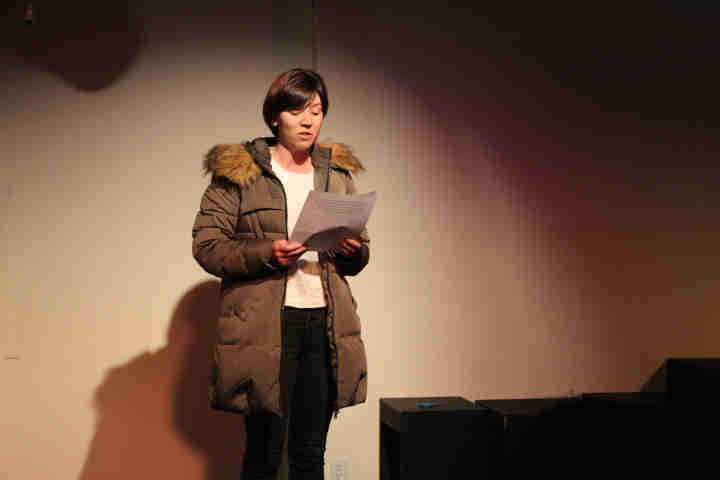

The idea that a classroom could accommodate a full spectrum of emotions stood in stark contrast to what I had experienced growing up, from elementary school through college. As a student, I had internalized the pressure of an academic culture propelled by rigorous testing and felt embarrassed whenever my emotions would overflow in the presence of my classmates and teachers, which they often did. Only in grad school have I been able to reframe my sensitivity as a strength. Pursuing an MFA in creative nonfiction has allowed me to recognize the correlation between letting feelings in and growing as an artist. Somewhere along the way, I discovered that I don’t merely write about past pain, I heal through the act of writing itself. That discovery is what drew me to TAP, and to the world of teaching artistry more broadly; I believe art can be a vehicle for getting to know ourselves, and that self-discovery can be a communal act.
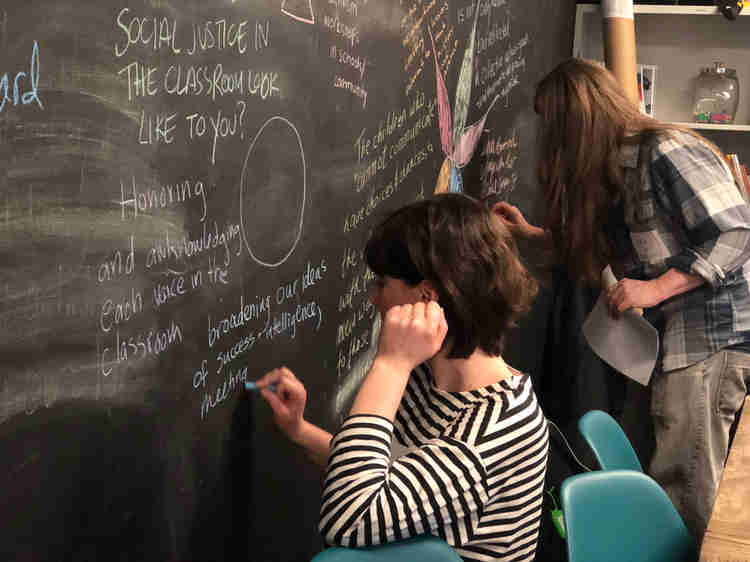

When I was first introduced to the concept of social-emotional learning, I was sad that it hadn’t gained traction back when I was around my students’ age group and sad, too, that I mostly heard about it in the context of K-12 education. Adults need this just as much as kids, I would often think. As a trainee, it was refreshing to know that TAP considered self-awareness and reflection as deeply integral to our teaching practice. Here are three of the biggest takeaways about classroom self-care, for students and educators alike, that I learned during my TAP experience throughout the past year.
-
Mindfulness can be a part of the classroom without being at the center of the curriculum. A teaching artist residency can be about social-emotional development. The guiding question at the heart of each lesson can focus on how our decisions and actions shape our lives and affect others, or about our pathways into adulthood. But it can also be about something outside the self: social justice or literature, for instance. Even if mindfulness isn’t explored directly in any given lesson, opening rituals that incorporate meditation and breath-work allow us to welcome our bodies into the classroom.
-
It’s okay for educators to bring our feelings into the classroom, but we need to be mindful of what we’re bringing. Life is always happening. It doesn’t stop when we enter the classroom. A quick check-in tells us exactly what we’re feeling. I recently attended a workshop led by Shawn Shafner of Arts for All. He likened a body scan to checking the weather before leaving the house, so that we can know which clothes to put on.
-
Sometimes, the best thing we can do is get out of our heads—literally. Physical discomfort and emotional distress go hand in hand more often than not. One of the best ways to do that quick temperature check of the mind that Shawn mentioned is through a quick body scan meditation.
Ultimately, we have a responsibility to show up for our students, but that doesn’t mean we aren’t still human ourselves. Having feelings and sharing them honestly is one of the best things we can do for our students. I’m reminded of that now more than ever.
